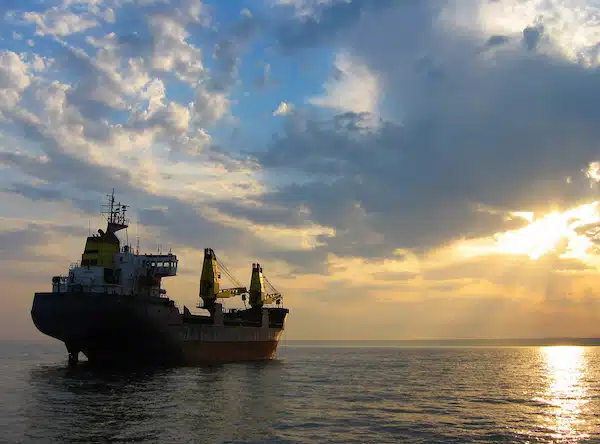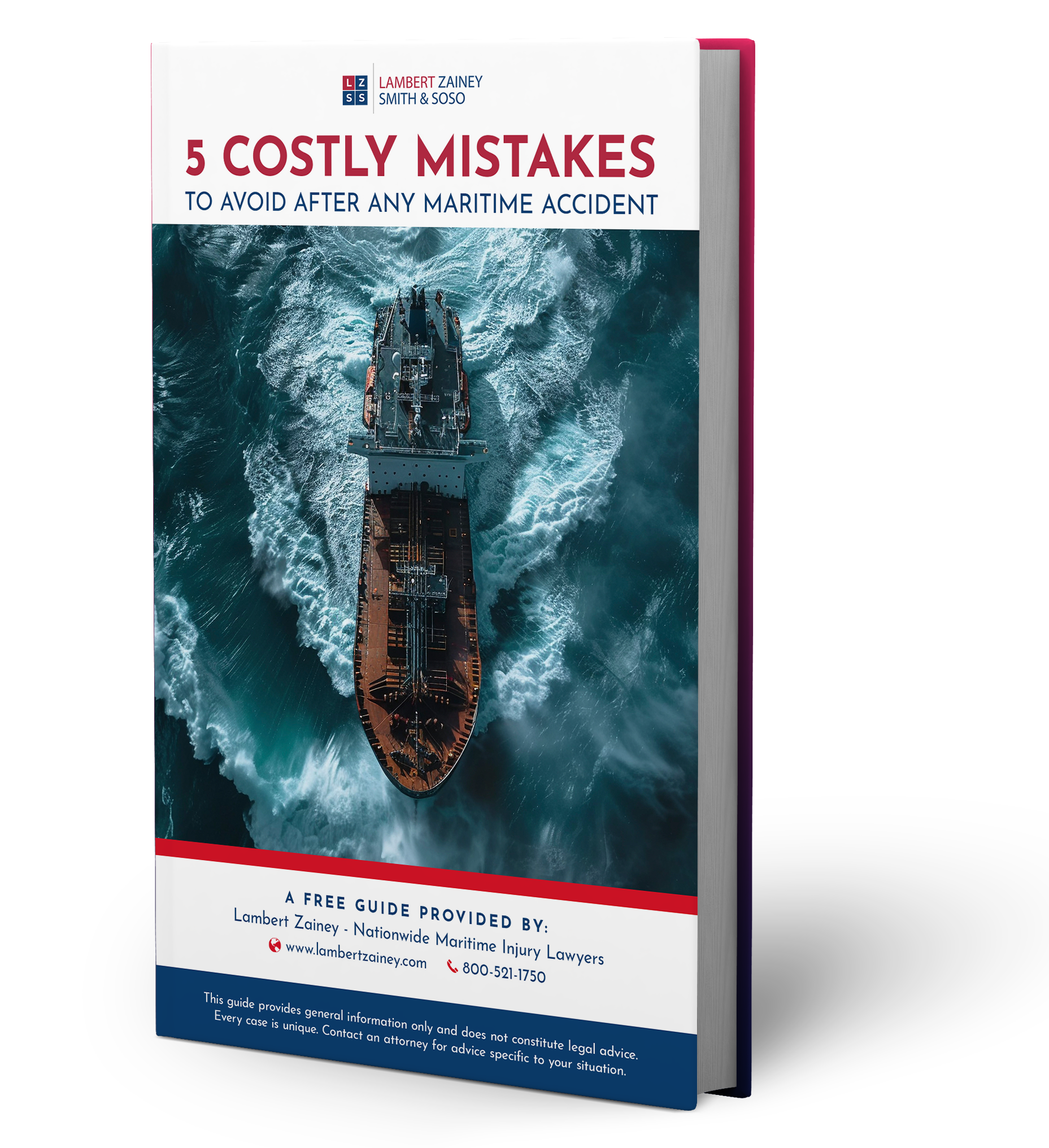The maritime industry is slowly becoming aware of the dangers that granular cargos present to ships and crews.
Granular materials like mineral sands and crushed ores generally aren’t toxic, don’t catch fire, don’t explode and they don’t give off radiation. Nonetheless, these materials may be responsible for the loss of several cargo vessels and their crews each year.

Sudden Liquefaction Can Cause a Vessel to Capsize and Sink
What makes these materials so dangerous? Bulk carriers, as the name suggests, are ships designed to carry cargos that are in solid bulk form. The International Maritime Solid Bulk Cargoes (IMSBC) Code defines solid bulk cargo as any material, other than liquid or gas, consisting of a combination of particles, granules or larger pieces of material, which is loaded directly into the cargo spaces of a ship without any intermediate form of containment. The problem is that under certain circumstances, “dry” bulk cargos like nickel or iron ore can undergo a rapid change from a solid state to a liquid state. Scientists refer to this process as “liquefaction.” When the solid bulk material turns to liquid, it can shift suddenly, affecting the vessel’s stability. Loss of stability can cause a vessel to capsize and sink, spelling disaster for the ship and its crew.
How Cargo Liquefaction Happens
While they may appear to be dry, solid bulk cargo materials usually have water trapped in the gaps (pore spaces) between the particles. Normally, this isn’t a problem because the friction between the particles causes them to stick together like a solid. However, these materials have a tendency to become compressed when they are packed into the hold of a vessel. This causes an increase in the water pressure within the pore spaces.
The motion of the vessel as it is rocked by the waves and vibrations from the ship’s engine and other machinery can increase the water pressure in the cargo hold, causing the materials inside to liquefy. The pressurized water fills the pore spaces to the point where the friction between the particles is reduced to zero, causing the material to behave as a liquid. When this happens on dry land, the water flows from an area of high pressure to one of lower pressure (usually from the beneath the ground to the surface). However, that isn’t always possible in the tight confines of a ship’s hold. The liquefied material begins to slosh around inside the hold. If not brought under control, the material may cause the ship to lose stability and capsize.
Preventing Cargo Liquefaction
Reducing the risk of liquefaction includes monitoring the moisture levels in a cargo hold and taking into account the material characteristics of the cargo, such as the ratio of solid particles to water. Crew hands have to be observant during the loading of the cargo to minimize the amount of water pressure in the hold. They have to remain vigilant to the amount of moisture in the holds and take steps to remove any excess water before it becomes a problem. Captains should monitor the weather carefully to avoid rough conditions that could contribute to cargo liquefaction. New technologies, such as sensors that monitor water pressure and lasers to scan for any shifts in the cargo’s position, should also help.
Get Our FREE Guide to Protect Your Claim
What you do after an accident is critical. Insurance companies will try to get you to make mistakes that can hurt your claim. Our free guide can help you avoid these traps.
Download our complimentary guide: “5 Costly Mistakes to Avoid After Any Maritime Accident” to arm yourself with the knowledge you need to protect your rights.
Lambert Zainey is Dedicated to Reducing Maritime Injuries
Ship owners are required to provide a safe environment for the crews of their vessels. When they fail to do so, potentially dangerous accidents like cargo liquefaction can occur. If you are a seaman who has been injured during a cargo liquefaction or other preventable accident, you have a right to seek compensation for your damages under the Jones Act and other maritime laws.
Lambert Zainey has been protecting the rights of injured seamen and other maritime workers for over 40 years. Contact us today to schedule a free consultation with one of our experienced maritime injury attorneys.
The maritime industry is slowly becoming aware of the dangers that granular cargos present to ships and crews.
Granular materials like mineral sands and crushed ores generally aren’t toxic, don’t catch fire, don’t explode and they don’t give off radiation. Nonetheless, these materials may be responsible for the loss of several cargo vessels and their crews each year.

Sudden Liquefaction Can Cause a Vessel to Capsize and Sink
What makes these materials so dangerous? Bulk carriers, as the name suggests, are ships designed to carry cargos that are in solid bulk form. The International Maritime Solid Bulk Cargoes (IMSBC) Code defines solid bulk cargo as any material, other than liquid or gas, consisting of a combination of particles, granules or larger pieces of material, which is loaded directly into the cargo spaces of a ship without any intermediate form of containment. The problem is that under certain circumstances, “dry” bulk cargos like nickel or iron ore can undergo a rapid change from a solid state to a liquid state. Scientists refer to this process as “liquefaction.” When the solid bulk material turns to liquid, it can shift suddenly, affecting the vessel’s stability. Loss of stability can cause a vessel to capsize and sink, spelling disaster for the ship and its crew.
How Cargo Liquefaction Happens
While they may appear to be dry, solid bulk cargo materials usually have water trapped in the gaps (pore spaces) between the particles. Normally, this isn’t a problem because the friction between the particles causes them to stick together like a solid. However, these materials have a tendency to become compressed when they are packed into the hold of a vessel. This causes an increase in the water pressure within the pore spaces.
The motion of the vessel as it is rocked by the waves and vibrations from the ship’s engine and other machinery can increase the water pressure in the cargo hold, causing the materials inside to liquefy. The pressurized water fills the pore spaces to the point where the friction between the particles is reduced to zero, causing the material to behave as a liquid. When this happens on dry land, the water flows from an area of high pressure to one of lower pressure (usually from the beneath the ground to the surface). However, that isn’t always possible in the tight confines of a ship’s hold. The liquefied material begins to slosh around inside the hold. If not brought under control, the material may cause the ship to lose stability and capsize.
Preventing Cargo Liquefaction
Reducing the risk of liquefaction includes monitoring the moisture levels in a cargo hold and taking into account the material characteristics of the cargo, such as the ratio of solid particles to water. Crew hands have to be observant during the loading of the cargo to minimize the amount of water pressure in the hold. They have to remain vigilant to the amount of moisture in the holds and take steps to remove any excess water before it becomes a problem. Captains should monitor the weather carefully to avoid rough conditions that could contribute to cargo liquefaction. New technologies, such as sensors that monitor water pressure and lasers to scan for any shifts in the cargo’s position, should also help.
Get Our FREE Guide to Protect Your Claim
What you do after an accident is critical. Insurance companies will try to get you to make mistakes that can hurt your claim. Our free guide can help you avoid these traps.
Download our complimentary guide: “5 Costly Mistakes to Avoid After Any Maritime Accident” to arm yourself with the knowledge you need to protect your rights.
Lambert Zainey is Dedicated to Reducing Maritime Injuries
Ship owners are required to provide a safe environment for the crews of their vessels. When they fail to do so, potentially dangerous accidents like cargo liquefaction can occur. If you are a seaman who has been injured during a cargo liquefaction or other preventable accident, you have a right to seek compensation for your damages under the Jones Act and other maritime laws.
Lambert Zainey has been protecting the rights of injured seamen and other maritime workers for over 40 years. Contact us today to schedule a free consultation with one of our experienced maritime injury attorneys.








